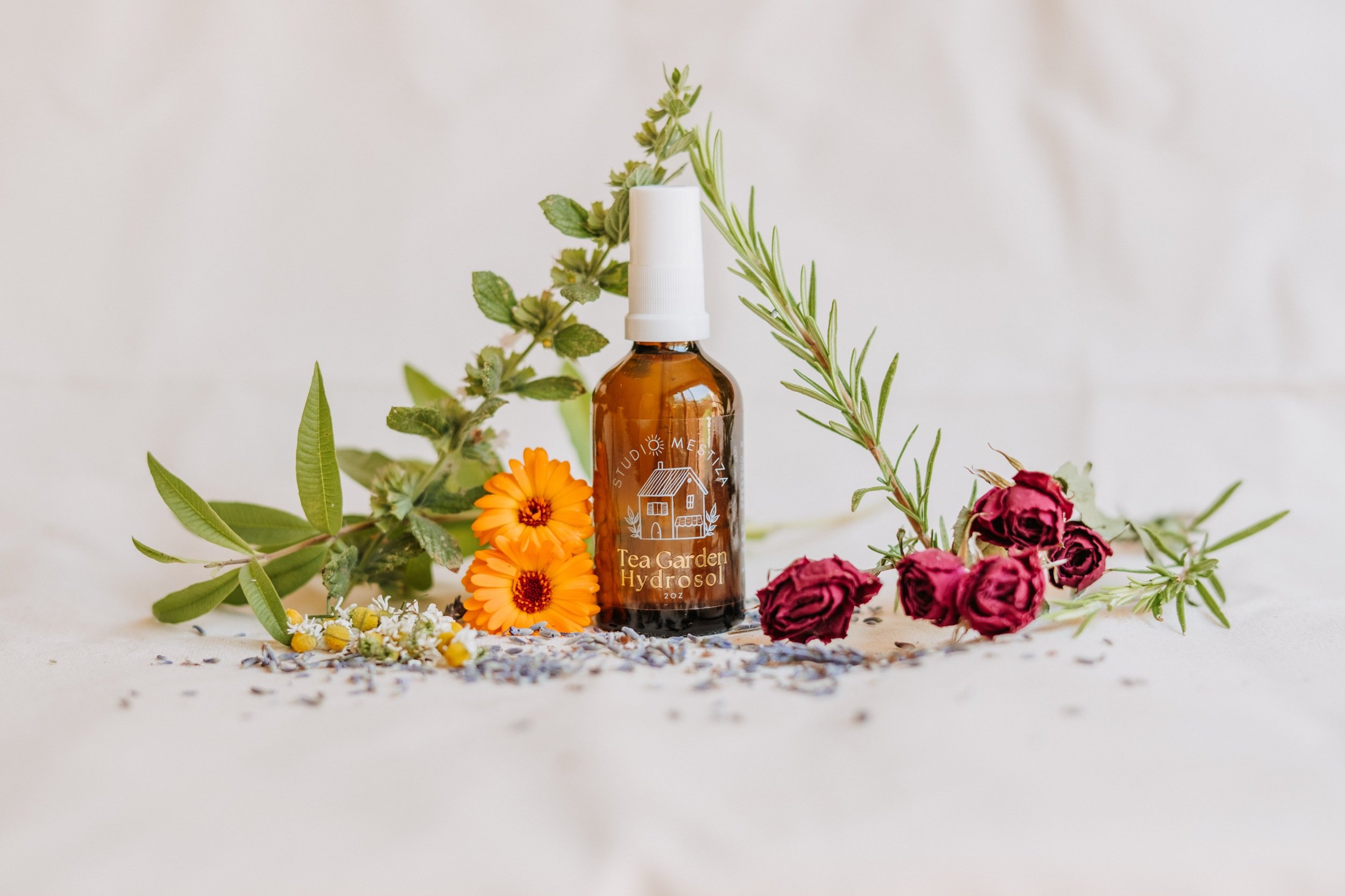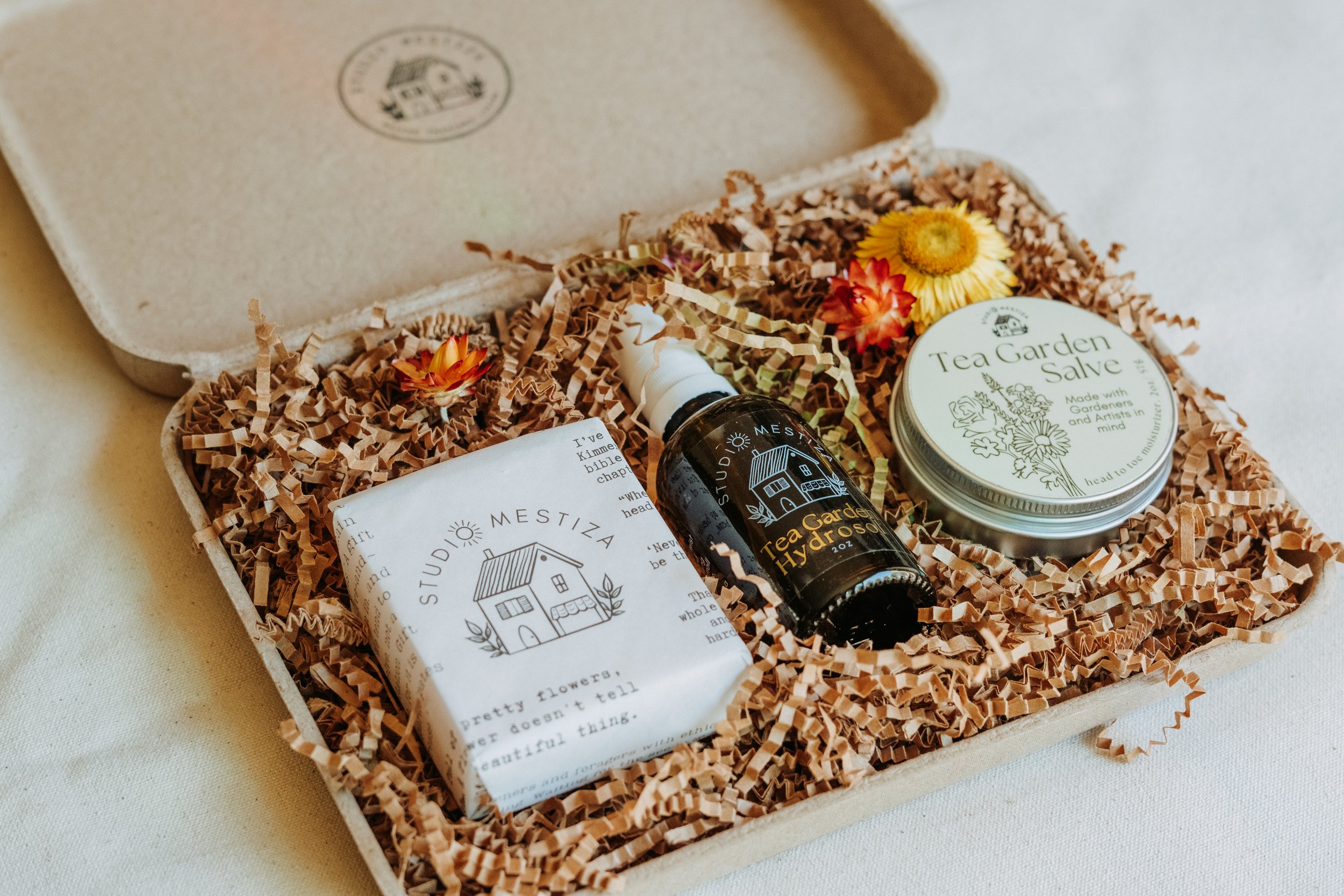From Harvest to Hydrosol
Copper distiller at 193.8 degrees F capturing Lemon Balm steam and volatile oils that get condensed back into a fragrant liquid also known at hydrosol
In most cases, people hear the word distiller and automatically think about alcohol, specifically moonshine or vodka. The distillation process involves separating the alcohol from its fermented liquid through heating and condensing it down to a potent and concentrated form. That same process is used in the Essential Oil industry. By steam distilling plant material, which include leaves, flowers, stems, and even fruits, we are able to extract highly potent essential oils that can be used in soap bars, salves and balms, candles, and a full list of skin products and aromatherapy.
Hydrosols, however, are often the byproduct of essential oil production that started to gain popularity for its gentle and skin soothing benefits. Hydrosols are essentially botanical waters that maintain the scent of the original plant that has been diluted down allowing for a safe direct application on skin. It’s important to note that essential oils are isolated extracts that can be quite irritating to the skin and potentially dangerous if not diluted down properly with a carrier oil, water, or lotion.
Hydrosols, on the other hand, can be used on their own. They can be used as a refreshing facial mist, added to clay powders to create a paste for clay masks, and can be added to diffusers for a gently scented room. Hydrosols can also be mixed with a small ratio of apple cider vinegar as a PH balancing facial toner, or combined with a small percentage of alcohol to create a room or linen spray. The possibilities are endless. If kept in a dark and cool room away from sunlight, hydrosols can last up to a year or more. Once you get a chance to incorporate hydrosols in your day to day, they will sure win hearts and quickly become a staple in your routine.
Freshly harvested Lemon Balm from the garden on 5-22-25 ready for distillation
Here at Studio Mestiza, we are always looking for ways to reinvest back into our business to not only streamline our prodcution process, but to provide educational insight into our handmade products. Acquiring a distiller has been such a rewarding addition to our soap making process as it enhances the scent of our bars, adds beneficial skin-loving properties, and elevates the luxuriousness of handmade soap.
We are always finding unique ways to document, savor, and celebrate the garden in each season so we never forget the flora and fauna currently in bloom. By preserving our garden through hydrosols and then into soap bars, we are reminded of the hours it takes to cultivate our small patch of land prior to the harvest and appreciate the hours it takes to produce our handmade items afterwards in small batches.
Water fills the pot (left) and plant material goes into the column (right) for steam distillation
A thin layer of Lemon Balm essential oil floats on top of the hydrosol as oils are nonpolar and do not mix with water
In the following video, we document our journey distilling our very first batch of Lemon Balm Hydrosol harvested fresh from the garden on May 22, 2025.






